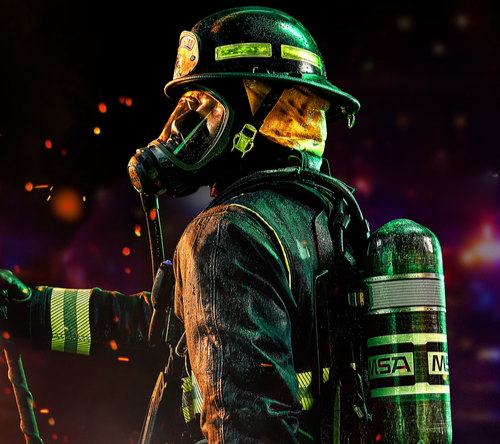Are you prepared for cold weather calls? What you put on your feet really makes a difference where your safety is concerned. While no footwear can eliminate all slips and falls, Arctic Grip Pro soles on Globe’s athletic construction boots take firefighter footwear to the highest level of performance and safety available.
Arctic Grip Pro is state-of-the-art sole technology specifically engineered by Vibram to perform on wet ice. A combination of the highest performing rubber outsole compound and an advanced filler system, Arctic Grip Pro soles provide unparalleled traction on wet ice.
In collaboration with Vibram, we undertook three scientific tests to prove that our Globe boots with the new soles can help to reduce slips and falls in cold and wet conditions.
Incline Ramp Test: Wet
Independent testing was conducted by scientists and engineers of the iDAPT Research team at the Toronto Rehabilitation Institute (TRI) of Toronto. TRI has a unique set of testing facilities whereby they can mechanically pitch, up to 20 degrees, an entire room that has been conditioned to form ice. In this environment, the test protocol requires the tester to repeatedly ascend and descend the icy surface to the maximum angle achievable. TRI tested Globe footwear outfitted with Vibram Arctic Grip Pro and other styles and brands of cold weather footwear.

Conclusion: The data reflected an eight times increase in the combined incline and decline angle achieved with footwear outfitted with Arctic Grip Pro.
Load Cell Test
Vibram conducted a load cell test, which was developed to test Arctic Grip Pro in real life situations. Ice is formed on a surface where a tester can strap into a harness attached to a load cell, then read the force output in kilograms. Three orientations are used: side, front, and back. Two firefighter boots were tested, one Globe with a Vibram Arctic Grip Pro sole and a non-Globe firefighter boot.

Conclusion: Test showed that the Globe boot with Vibram Arctic Grip Pro sole exceeds the coefficient of friction of 0.30 on wet ice, which is the ASTM recommended threshold to reduce the risk of slipping.
Cold Hardness Change Test
Vibram also conducted a cold hardness change test to measure changes to the boots’ compounds at -23 Celsius (-9.4 Fahrenheit) and -40 Celsius (-40 Fahrenheit) at 30, 60, and 90 minutes. Two firefighter boots were tested, one Globe with a Vibram Arctic Grip Pro sole and a non-Globe firefighter boot. Higher numbers mean a harder sole; lower numbers are more flexible.

Conclusion: The cold hardness change test results showed a large jump in hardness for the non-Globe boot in both -23 Celsius (-9.4 Fahrenheit) and -40 Celsius (-40 Fahrenheit) temperatures. The test showed smaller hardness changes for the Globe boots with the Arctic Grip Pro soles, which proves they are more flexible and stay more flexible in colder weather. That translates to less physiological strain and less likelihood of trips and falls on the fireground.
At Globe, we are committed to developing solutions that lessen the many health and safety risks faced by firefighters every day, including those that may result in long-term health consequences. Globe boots are engineered to deliver improved safety through science.







